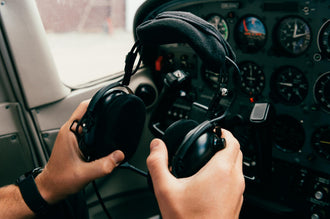
The Importance of a Specialised Aviation Headset
- 08 Feb, 2021
If you’re a new pilot or are looking at riding along on a friend or family member’s aircraft, you are going to need a headset. With a bit of luck the aircraft’s owner will have provided a headset for each passenger seat. If not, showing up for the flight with your stereo’s headphones just won’t do the trick. The unique environment of an aircraft cockpit requires something a cut above any headphones you might have used in any earth-bound activities. Read on to find out what you should be looking for in an aviation headset and why.
Clearer communication in noisy environments
All powered aircraft make much more noise than first-time pilots and passengers imagine and you need a headset that will attenuate as much of the noise as possible. There are several reasons for wanting to do this. Among them are protecting your hearing and ensuring that clear communication between the pilot and passengers and air traffic control can be maintained. This is a critical requirement for safe flight.
The aviation headsets providing the highest level of noise attenuation use active noise reduction (ANR), in which the headset generates a sound wave with the same amplitude but an inverted phase to that of the background noise, cancelling it out. This results in the greatest possible attenuation of cockpit noise.
Additionally, aviation headsets always come equipped with noise-cancelling microphones. Noise cancelling microphones have two sound inputs, one facing outwards and facing inwards, towards the user. The result is that general cockpit noise enters both inputs and is cancelled out. The pilot speaks into the inward side of the microphone which is positioned very close to the lips, preventing the speech from entering the outward side of the microphone. This means the user’s speech is heard by the recipient as clear as possible, with cockpit noise minimised.
Different systems call for different technology
Furthermore, all aircraft use headset plugs that are substantially different from those on your computer or stereo, meaning you’ll require at the very least an adaptor, but ideally a specially-made headset pre-equipped with the right plug.
Ensuring you’ve got the right equipment before you fly can help make this one of the most rewarding and fun hobbies out there. For help getting the right headset for your needs and aircraft, speak to the experts at Pilot Communications about our extensive range of units compatible with a range of aircraft and suiting adults and children.




